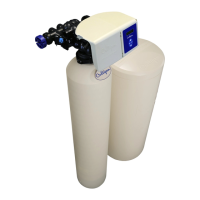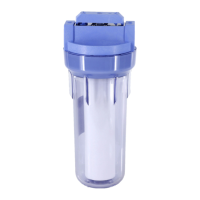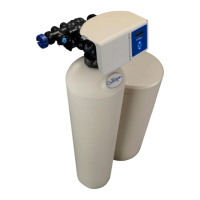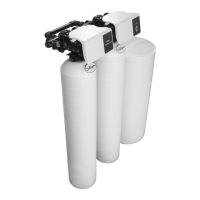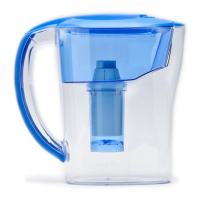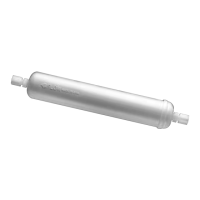What to do if there is mineral to service in my Culligan High Efficiency 1.5 Twin?
- MMichael HarrisonSep 13, 2025
If you find mineral in the service line of your Culligan Water Dispenser, the outlet manifold may be defective and require replacement.
What to do if there is mineral to service in my Culligan High Efficiency 1.5 Twin?
If you find mineral in the service line of your Culligan Water Dispenser, the outlet manifold may be defective and require replacement.
| Brand | Culligan |
|---|---|
| Model | High Efficiency 1.5 Twin Series |
| Category | Water Dispenser |
| Language | English |
Emphasizes reading the manual before operating the water softener.
Outlines the contents and purpose of the manual.
Highlights important safety information and warnings for installation and operation.
Explains the concept of hard water and its characteristics.
Details the negative impacts of hard water on equipment efficiency and lifespan.
Describes the ion exchange process used by the softener to remove hardness.
Outlines the four-step regeneration process to restore resin efficiency.
Discusses factors influencing the frequency of regeneration cycles.
Explains the automatic and manual control methods for regeneration.
Lists technical specifications, capacities, and dimensions in U.S. customary units.
Lists technical specifications, capacities, and dimensions in metric units.
Guides the selection of an appropriate installation location for the softener.
Details the process of installing the distribution system within the tank.
Provides instructions for loading the resin and underbedding into the tank.
Explains how to attach the control valve assembly to the softener tank.
Covers the necessary steps and precautions for plumbing the softener system.
Illustrates common plumbing layouts for the softener system.
Details settings and replacement procedures for eductor components.
Step-by-step guide for replacing the drain line flow control.
Instructions for reattaching the control valve enclosure cover.
Describes how to adjust the hardness bypass feature for variable water conditions.
Guides the installation of the meter, adapter, and interconnecting pipe.
Instructions for installing an optional bypass valve assembly.
Explains how to use the bypass valve for service or bypass modes.
Details the drain line connection, including height limitations.
Covers the installation of the optional brine system and its piping.
Explains how to connect wires to the Smart Controller circuit board.
Instructions for connecting various accessories to the control valve.
Guides the use of controller enclosure ports for accessory connections.
Provides detailed steps for installing the Aqua-Sensor probe.
Instructions for installing the modem onto the GBE board.
Diagram showing the front layout of the Smart Controller circuit board.
Diagram showing the rear layout of the Smart Controller circuit board.
Diagram illustrating the electrical connections of the Smart Controller.
Details the installation and application guidelines for the Aqua-Sensor probe.
Explains the function and use of the auxiliary output board.
Describes the installation and wiring of the auxiliary output 5 relay board.
Guides the selection of location and mounting of the wireless remote monitor.
Provides installation instructions for the Smart Brine Tank Probe.
Steps for installing the modem module into the GBE circuit board.
Instructions for installing the modem into the remote monitor housing.
A step-by-step guide for correctly starting up the water softener system.
Instructions for sanitizing the water softener system under specific conditions.
A checklist to ensure the system is properly installed and ready for service.
Guidelines for maintaining the appearance and operation of the unit.
A schedule for routine inspections and maintenance of the water softener.
Discusses common service issues related to misapplication or environmental conditions.
Outlines a three-step process for troubleshooting system problems.
Lists tools and data needed for diagnosing system issues.
Step-by-step shutdown procedure before performing maintenance.
Instructions for removing and replacing the circuit board.
Detailed steps for removing and installing the gearbox.
Instructions for removing and replacing the pistons in the valve body.
Procedures for inspecting, cleaning, or replacing the eductor assembly.
Steps for maintaining the brine and drain line components.
Discusses service for the drain line flow control, including potential clogging.
Analyzes common issues related to water level and safety valve in the brine tank.
A comprehensive table of common problems, their causes, and solutions.
Identifies the location of pistons within the flow valve.
Lists the sequence of steps during a downflow regeneration cycle.
Describes the service flow path for the water softener.
Details the backwash flow path during regeneration.
Describes the brine draw flow path during regeneration.
Details the slow rinse flow path during regeneration.
Describes the fast rinse flow path during regeneration.
Details the refill flow path for the brine tank.
Describes the bypass flow path, allowing raw water to service.
Exploded view showing the components of the control valve assembly.
A detailed list of part numbers and descriptions for the control valve.
Diagram showing the tank assembly and related parts.
Lists and illustrates parts for the Aqua-Sensor probe.
Parts list and diagrams for brine systems of specific sizes.
Parts list and diagram for the 24"x50" brine system.
Exploded view and parts list for the brine valve assembly.
Lists different versions of the remote display assembly.
Lists various accessories available for the remote display and controller.
Provides guidelines for applying the Aqua-Sensor based on water parameters.
Table showing recommended salt dosage based on water hardness.
Data on resin capacity related to bed depth and salt dosage.
Table detailing service and drain flow rates for different models.
Format and definition of status messages for single unit control.
Instructions on how to connect to and test the data port output.

